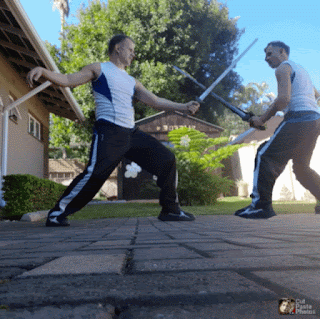Jian Basics- Defense and Counterattack
Hello, everyone, and welcome back.
This morning started rather shakily as I have given my first webinar.
I had a lot of fun pointing out the internal aspects of the Shotokan kata Heian Yondan and explaining why Karate techniques are done the way they are done.
I have not forgotten, however, that we still have the Jian to talk about.
This is the second last post in the series and the next time you see me we will be doing a short sword form.
Before I do that, however- let's first look at the defense and counterattack techniques of this weapon.
You still remember which part of the blade is used for blocking, right? Well- when you are defending- it is that part that shall make the most movement because that is the part that shall make contact with your attacker's weapon.
You have probably practiced these body rotations against body thrusts a couple of times now.
Only thing I can add is that I like to keep the sword tip pointed at my attacker. It is a good deterrent against following up a jab with a charge that will render this long-range weapon virtually useless.
So- while I keep the blade angled enough to cross the horizontal blade that is coming toward me and push it to either side I also make sure that the sword tip remains between my opponent and myself.
Generally, parrying can knock a straight attack either left or right or up or down.
Keeping in mind what part of the weapon we block with the upward parry shoots the hard part of the blade upwards to knock the attacker's weapon upwards. Still- the tip remains pointed towards the attacker and countering is quick and easy.
This movement looks familiar, right?





Comments
Post a Comment